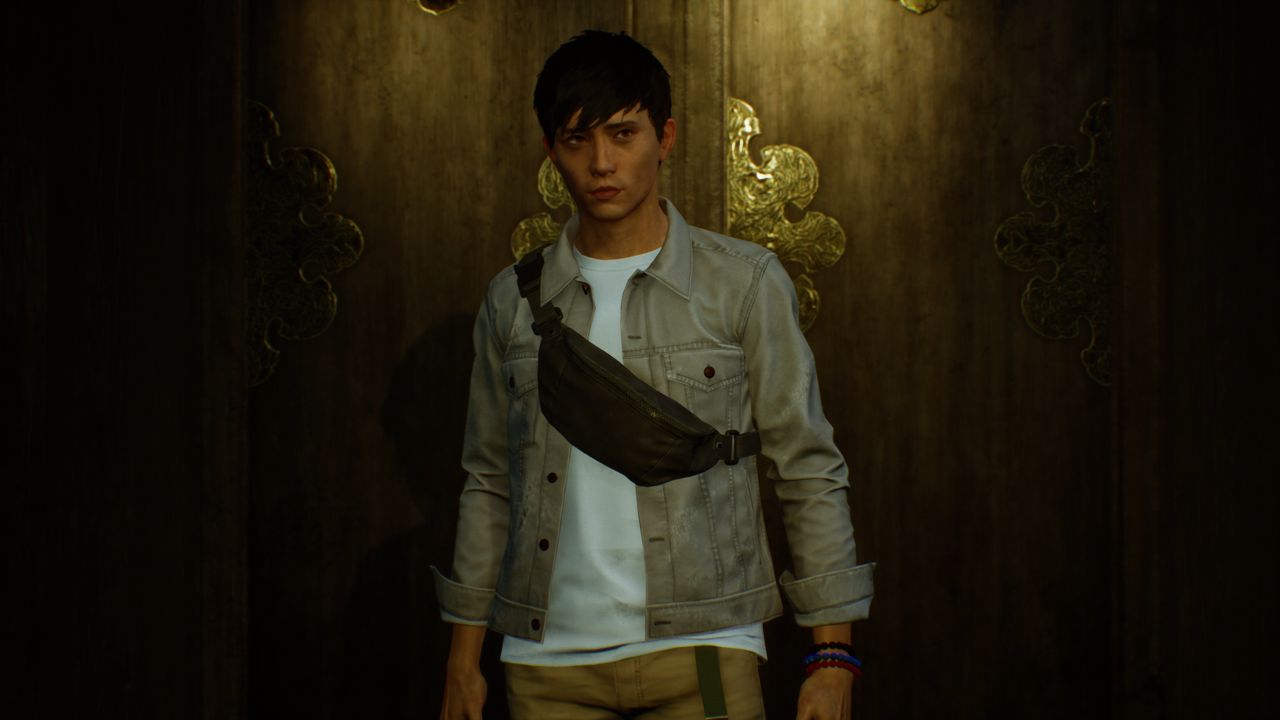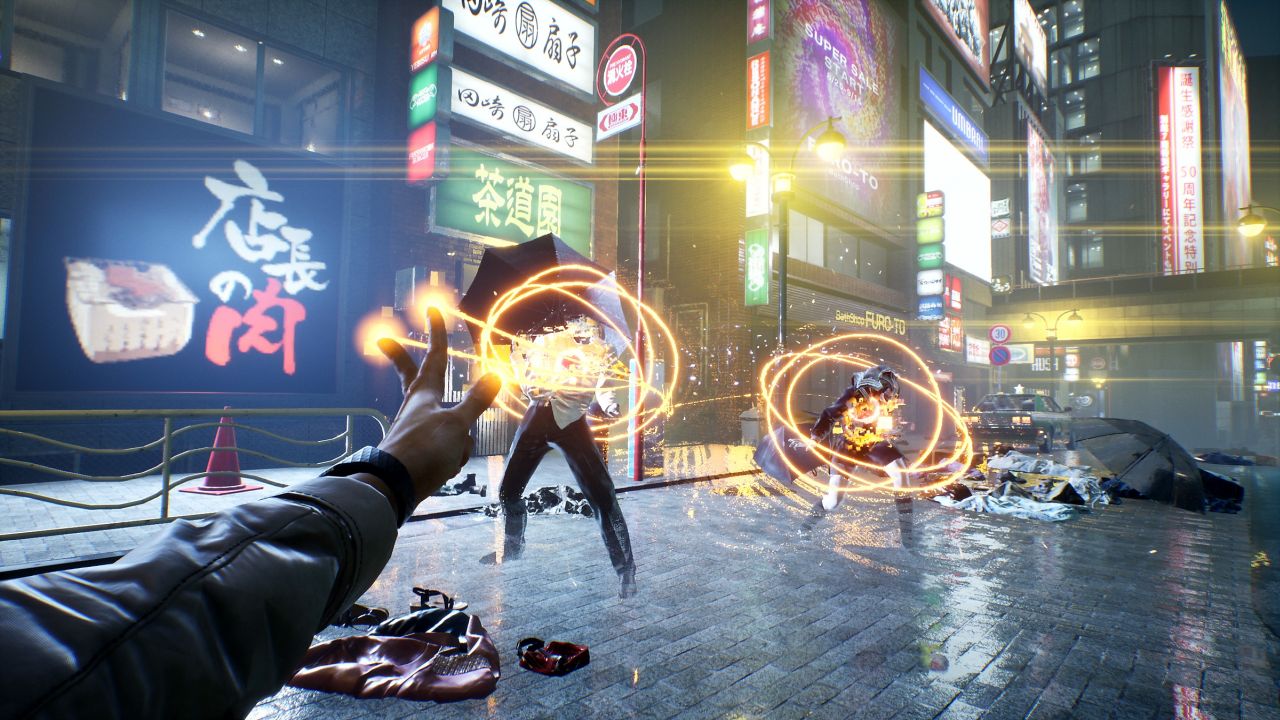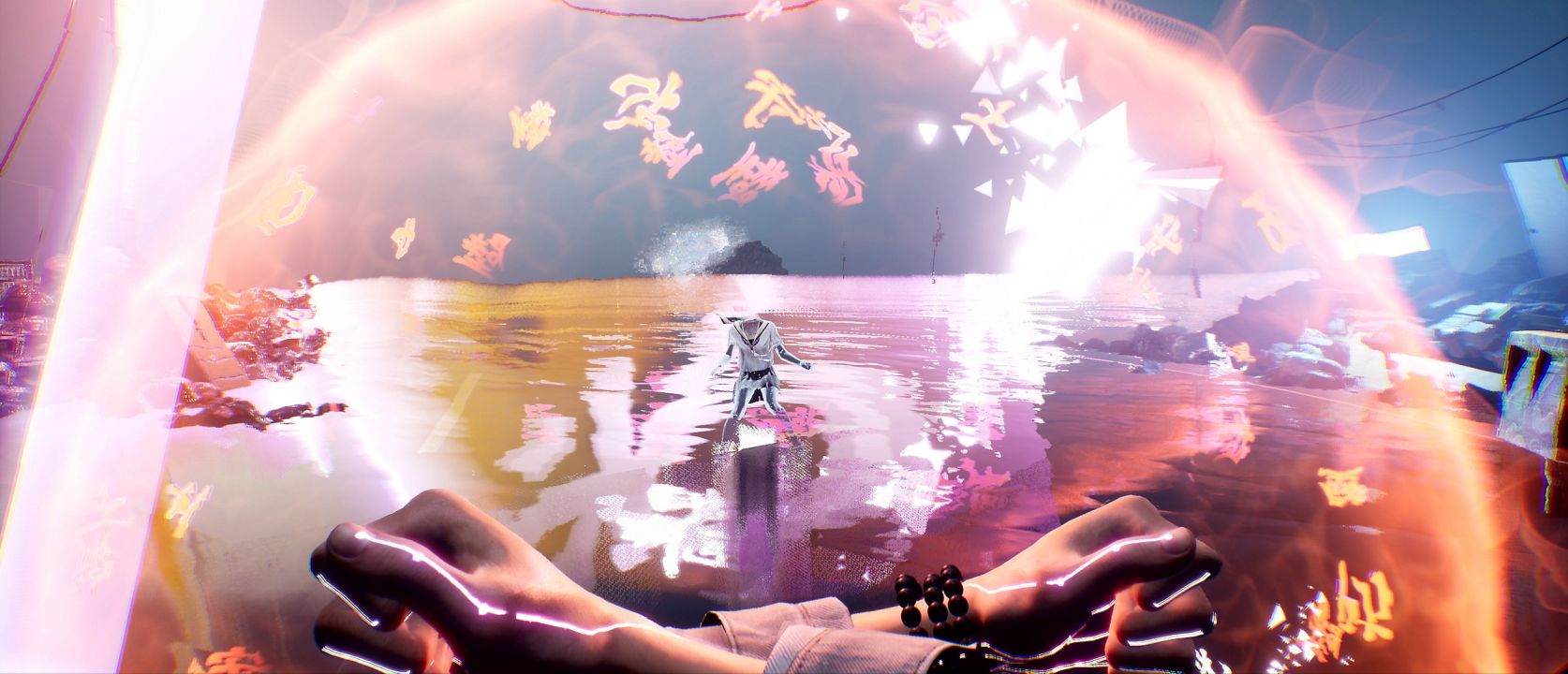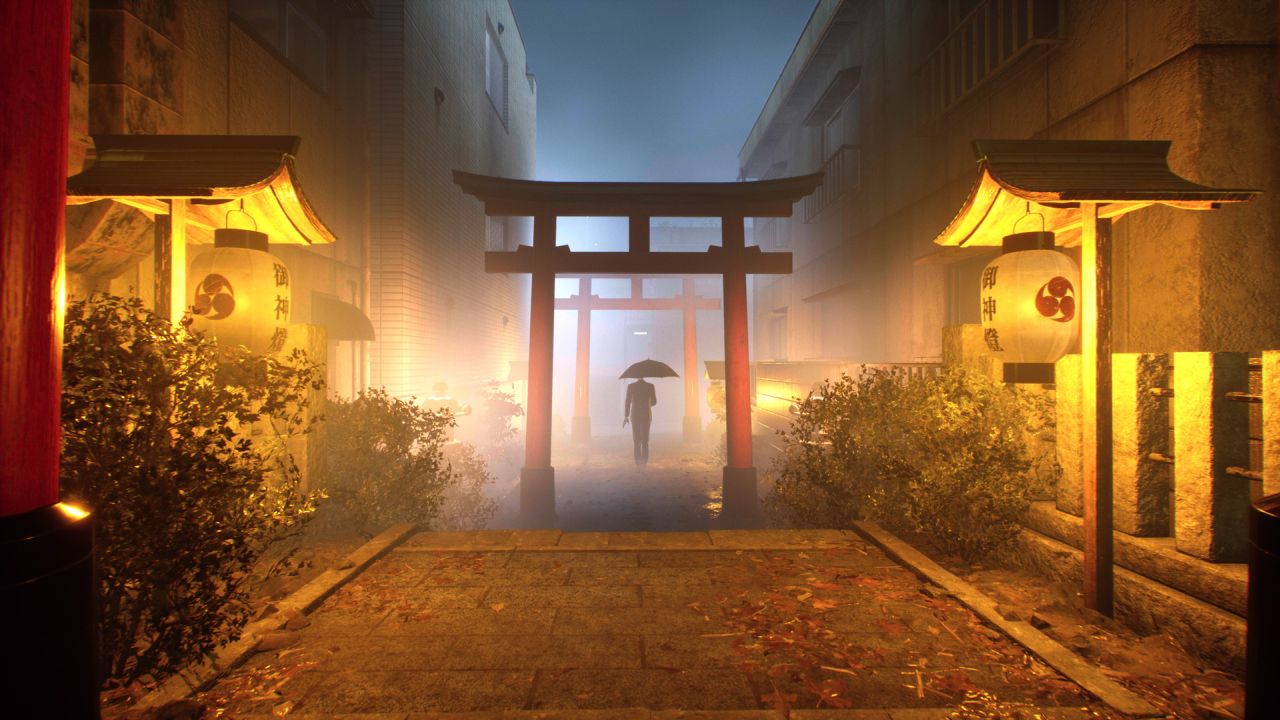Ghostwire: Tokyo Review
A moonlit vision of a metropolis filled with apparitions
Japanese developer Tango Gameworks was founded in 2010, and was quickly acquired by the big publisher Bethesda Gameworks before they even released their first title. There was likely some kind of drive by Bethesda to expand their portfolio, creative diversity, and international appeal. The team went on to create The Evil Within horror series as their debut. But for their next game, they have chosen to pick something closer to home – a supernatural story set in their home town of Tokyo. This new venture offers a few interesting ideas and a well realized setting, but comes up short in a number of areas that make the full asking price tougher to justify.

Ghostwire: Tokyo takes players to the modern day version of the titular city. One night, a young man named Akito gets possessed by a wraith moments after a possibly fatal car crash. The spirit tells Akito that they must work together in order for both of them to survive – and moments later a mysterious fog sweeps through the city, making the bodies of the populace vanish into thin air while their spirits get captured and carried away. Further, an army of faceless manifestations named Visitors now roam the streets. In a panic, Akito rushes to the nearby hospital where his sister Mari is recovering, but they are too late. The masked villain Hannya has apparently deemed Mari to be a special key that's needed to complete his ritual, and has whisked her away. Together, they must explore the city to find Hannya and put a stop to his plans, and rescue Mari. Over the course of the journey, Akito learns that his invading spirit is named KK, a detective that perished while investigating Hannya; the two eventually form a typical bond over their shared goals and virtues.
The narrative seems initially intriguing – there was potential here for an interesting tug-of-war between Akito and KK. The latter can actually forcibly control the host body, while the former could die if KK leaves. However, the story never really uses these ideas to great effect, and in fact abandons these stakes – with moments where the two are forcibly separated, to no ill effect. The relationship between the two lead characters progresses in very predictable fashion, as they find common ground and realize they are quite similar in nature. It's only a decent plot thread – though perhaps not enough to carry the story, considering there are very few other characters to speak of. Mari and Hannya are barely in the game, there is a spirit of a hacker named Rinko that shows up for a time, and a man you never meet named Ed leaves audio messages around. Hannya's motives turn out to be rather contrived, and the finale tries to hone in on an emotional tone which falls entirely flat, while providing no answers to the state of the world. The story, like many other aspects of Ghostwire, seems to be quite limited in scope.
Over the course of the campaign, players will explore a part of Tokyo as Akito and chase the trail of the villain while combating the Visitors in the streets and alleyways. The game takes place entirely at night, with the occasional rain. With all other inhabitants gone, it certainly gives the city a moody and quiet atmosphere as you explore it from a first-person perspective. The bright neon lights shine upon empty streets, occasionally littered with clothes of those who vanished, with a big red moon in the sky. It seems to be an authentic recreation of the city, with many landmarks seemingly faithfully recreated. Players will have to open up new places to explore by clearing the deadly fog, a few city blocks at a time, by cleansing Shrines and Torii gates via simple interaction. These gates also double as fast travel points. It's a decent mechanic, though not particularly engaging – like having to climb a tower in Assassin's Creed before being able to undertake missions in the area.

And indeed some of the gates are located on top of buildings, which may take players a few moments to figure out a path to. To reach some of the higher spots, there are floating Tengu creatures that you can grapple and zip up. From the higher buildings, you can then float down using the limited glide ability, or just jump off as there is no fall damage. The movement is fairly clunky; there's not much precision involved in the platforming and climbing, and it's thankfully rather forgiving. It's fine to walk and sprint in a straight line, but turning forcibly slows you down.
The movement mechanics are perhaps intentional because when not walking the streets of Tokyo, players will be taking on linear missions that often take place indoors. Whether in a hospital, bath house, or a private residence, all of the interiors are incredibly small and cramped locations. This is undoubtedly authentic to the setting, but it certainly makes for a very limited game space. And there's not a ton of environmental detail here, despite being specifically made for standalone missions. In the main story missions, you may need to visit a few different locations, and interact with an item or two, as well as fight some Visitors. There are also infrequent horror elements and rare perspective-shifting trickery. But on the whole, everything is quite linear and feels cramped, without any platforming or even puzzle elements, and not much objective variety. Optional side missions suffer the same fate, with very brief tasks that usually take under 5 minutes and end with a fight or an item to find. The side missions have a brief narrative, like exorcising the spirit of a hoarder in his filthy home, but it's all quite brief and instantly forgettable.
Across all missions and out in the open world, players will have to contend with the Visitors. These manifestations come in a few forms; there's a tall men/women with an umbrella, headless school girls, and floating apparitions. There are a few varieties of each type of enemy, though in gameplay terms they are quite similar. They have just a couple of attacks, either ranged or melee. Some infrequently encountered enemies add a bit of diversity, but considering the limited arsenal at the players' disposal, it doesn’t affect much. To reduce the time in combat, you may wish to use stealth when possible – it lets you eliminate almost any enemy instantly from behind.
The combat in Ghostwire feels rather pedestrian, and the slow movement mechanics are just the start. You have a block ability that reduces damage, or eliminates it altogether if you do a well-timed parry. As you awkwardly backpedal and strafe around the foes, you can shoot at them using the special abilities that merging with KK has granted you. There's little weight to the first-person action, and it feels like using magic in an RPG. The attacks are called Ethereal Weaving and you're granted the ability to use wind, water, and fire. Wind is your basic rapid fire attack for direct hits, water attacks have a wide range meant for crowd damage, and fire attacks cause big damage and can explode. They are functionally different, but the mechanics remain the same, and no enemies are strong or weak against any specific element. You'll have the most capacity for Wind attacks, followed by Water and Fire, each having their own "ammo". To get more energy (ammo), players will run around and collect the Ether from defeated enemies, as well as by breaking apart specially marked floating objects that contain it, from cars to vending machines and bicycles.

Most of the combat scenarios adhere to this pattern; shoot at enemies until you deplete your SP ammo reserves, then run around and grab some more, rinse and repeat. Once you deal enough damage, enemies stop and expose their core temporarily, which opens up a remote takedown attack move – but this can be interrupted, so you can just eliminate them with some more shots. If enemies group up, you switch to Water or Fire for more damage and bigger range. It always feels a bit awkward, and even more so in the few unimaginative boss fights. The fights against the large manifestations are typically multi-stage but with so few combat options, it always boils down to "shoot the weak spot".
There are a few moments of variety – when you are separated from KK and only have the bow as an offensive weapon. But using the bow is equally unsatisfying, as it feels imprecise and the arrows have too much of an arc. You could also use special items called Talismans – these create an area of effect that can turn the tide of battle. One lets you shock all enemies in place, the other exposes their cores – both leading to instant elimination opportunity. The other two are stealth focused – one lets you create a bush to hide in, which is awkward and rarely works, while the other creates a distraction sound. Using the combat talismans can help speed up the combat, but they are mighty expensive to purchase. Players can also discover and equip beads on their wrist, which add worthwhile bonuses to damage output and healing effectiveness.
When not in missions or combat, you can explore the open world, and visit shops run by cats to replenish your inventory. Players can buy more arrows, the very expensive talismans, and food items. There are tons of different foods that can be consumed during combat, but it seems unnecessary – you will just scarf down whatever you have via the quick-use. Some may have temporary extra bonus effects, but it usually isn't needed. On medium difficulty, with a bit of exploration, the game is not overly challenging. Exploration is also straightforward, given the Spectral Vision ability which temporarily highlights all items and enemies around you, making stealth and collecting items quite trivial. And the game does have many things to collect, from audio logs to Jizo statues which raise your SP capacity, to relics, and clues from KK's past detective work. Your rewards for finding certain items include music tracks, lore, and new outfits items for Akito – though given you only see him in third person during story cutscenes, the value of new clothes is perhaps diminished.
Visual customization is one of a few mechanics that don't add much to the experience. Even having an inventory screen – to manage your clothes and food items – seems unnecessary. A couple of times, the game decides to lock you in an area and start a countdown, forcing you to find a few special items in order to escape. The time limit is generous, and this mechanic can even be turned off in the options. Another mechanic has you perform special hand movements to cast a spell of sorts, by following a movement pattern drawn on screen with the right stick. These moments are brief and easy, and again there's an option to just skip them. There are also a couple of times where you must find something in the city using binoculars atop a building; with little narrative or visual guidance of what you’re looking for, this pace-killing mechanic is thankfully seldom used. Lastly, you could also collect the thousands of spirits that are scattered around the city. However, you can only hold a limited number of spirits at a time (can be increased at the shops), before they have to be dropped off at a payphone. This apparently sends them down to Ed, who can keep them safe from capture. The entire setup is just busywork. You can't lose the spirits you're carrying, so having dropoff spots is pointless. And when you do drop them off, the game asks for a confirmation – but with them having no other use, it's again meaningless.

The act of collecting spirits is beneficial though, as doing so nets you more experience, along with missions and combat. Earning XP increases your level, which boosts overall health and nets a few skill points to spend. Skill points can be spent to increase efficiency rather than damage or survivability, such as being able to carry more arrows, food, and talismans, increasing the firing speed and damage range of attacks, and extending how long enemy cores stay exposed. All of the upgrades are pretty much standalone to a specific skill/ability, and the occasional later unlocks require special rare Magatama currency.
Despite being a current-gen PS5/PC exclusive, the presentation quality is rather subpar and the very limited scope likely means it would run on PS4 with ease. There is rarely much music going on, though you can manually play some from the menu, like Metal Gear Solid. Instead, the quiet of the night is often interrupted by animal sounds and crude Tengu screeches. Traversing Tokyo is largely a lonely experience, though the city is apparently full of cats and dogs, who you can pet, feed, and read thoughts of, which is sometimes needed for missions. The developers chose to default to the Japanese voiceovers, which is interesting, and the English voice acting is rather flat. Still, neither VO is helped by the often rough dialogue writing.
Similarly, the visuals are average at best, and certainly below-par for a next-gen title. The textures, animations, and special effects are all rudimentary and clearly on a limited budget. The game has a few different visual modes – targeting 30fps, 60fps, and uncapped – but the visual fidelity doesn't improve much. Loading times are quick, but happen each time you go in/out of interiors.
Ghostwire: Tokyo is a bit of a change of pace for Tango Gameworks. There are traces of their linear horror debut series The Evil Within in their latest title, and with a new open world and a home base setting in the city of Tokyo, this was clearly a passion project for the studio. However, an underwhelming story, clunky movement, and limited combat gameplay leave much to be desired. With the game clocking in at under 12 hours, and looking fairly dated, the full asking price makes this paranormal adventure difficult to recommend.
 Comments
Comments

















